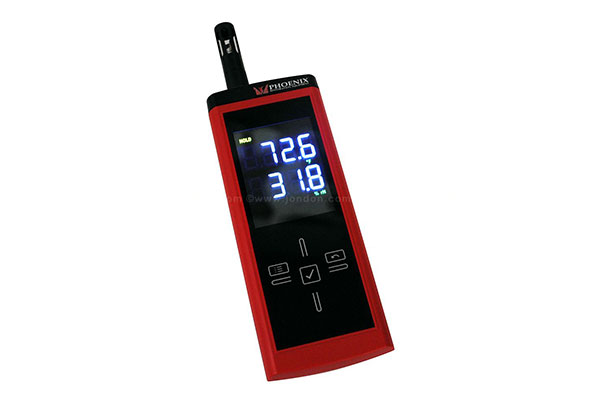Hygrometers, often referred to as thermal hygrometers, are used in restoration to monitor any air that can influence the temperature and/or humidity on a water damage job. It is a tool that can be used to measure the amount of water vapor (humidity) in an air sample. When used properly, hygrometers can verify that the drying equipment is operating as planned and whether additional equipment may be needed to control either temperature or humidity.
Hygrometers for Strategic Decisions
As drying progresses, hygrometers must be used to verify drying conditions. Are the conditions required to allow walls, carpet, and wood to dry being met? By analyzing drying conditions with a hygrometer you will be able to know, for a fact, that things are progressing as planned. Five key areas need to be monitored on water damage restoration job on a daily basis; the materials being dried, the air being used to dry, and the equipment and mechanical systems that are being used to control drying conditions.
These are the five areas that need to be monitored daily:
- Affected Areas – humidity should be decreasing with each reading. After the first 24 hour period, relative humidity readings should be below 40% Rh. A low Rh will help stop mold growth by deny the mold moisture it needs. After the first 24 hours relative humidity is only important to determine GPP (grains per pound, the actual amount of moisture present in the air).
- Unaffected Areas – humidity in unaffected areas should remain relatively stable. If it decreases along with the affected area, the affected area isn’t considered to be its own drying chamber, which will slow drying times considerably.
- Dehumidifiers – it is important to know that dehumidifier is continuing to remove humidity. Comparing the GPP coming out of the dehumidifier to the air in the affected area will determine grain depression, or how much drier the air is between the dehumidifier and what the restorer is attempting to dry. The greater the depression, the faster drying will occur. As drying progresses, grain depression between the two will narrow.
- HVAC System – if it is running, monitoring it will ensure that it is aiding and not hindering the drying. An HVAC system acts like a giant dehumidifier. Monitoring its output is important.
- Outdoor Air – if conditions outside are better than the affected area, outside air can be used to assist drying. This can be done by opening a door or window for a short period of time. Because wet will gravitate to dry if it can, wet air will “move” toward drier air.
Setting up and maintaining drying conditions isn’t rocket science, but it is science nonetheless. The hygrometer provides the scientific knowledge you need to dry a structure successfully. If the structural materials are drying, the drying system is working. Without precise data, you just don’t know for sure.
What Are the Numbers?
While moisture meters can measure the moisture content of solid materials, a thermal hygrometer will test the air for the moisture it contains. The two big numbers these instruments provide are air temperature and relative humidity. The restorer can than use these two measurements to determine the effectiveness within the drying system.
In the good old days, a restorer would have to record these numbers, pull out a often times confusing psychometric chart, and then plot the numbers to determine drying conditions (it’s still good practice to do this today). Now, hygrometers have progressed to the point that, with the push of a button or two, the meter will display not only temperature and relative humidity, but also dew point, and GPP. GPP tells the restorer the real number that he/she is looking for, how many grains are still present and if the number is continuing to decrease. The difference between the affected air and what is processed out of a dehumidifier is known as grain depression. There are 7,000 possible grains of water that can be held in one pound of air (if they are all present, you are probably under water). How many of those grains are still present, when compared to previous readings, reveals whether drying is taking place and that the drying is occurring at a satisfactory rate.
If grain depression is not being reduced, the restorer quickly knows that something is wrong. Unwanted air may be entering the area, there may not be enough dehumidification taking place and more equipment is needed, or there may be an undiscovered pocket of moisture that was missed. Without these accurate numbers that a hygrometer can provide, drying turns into a guessing game. And both homeowners and insurance adjusters hate guessing games.
At Water Mold Fire Restoration our technicians are nationally certified water damage experts trained in the use of our restoration equipment . They understand how to get the drying equipment set up so that drying happens as fast as it is scientifically possible and how to monitor drying as it progresses. If your home has been damaged by mold or fire, we can help you with those issues also. You can reach us any time of the day or night at 800-905-0277 or by email at help@watermoldfire.net. We will come to your home and inspect any damage at no charge and you will be under no further obligation.








